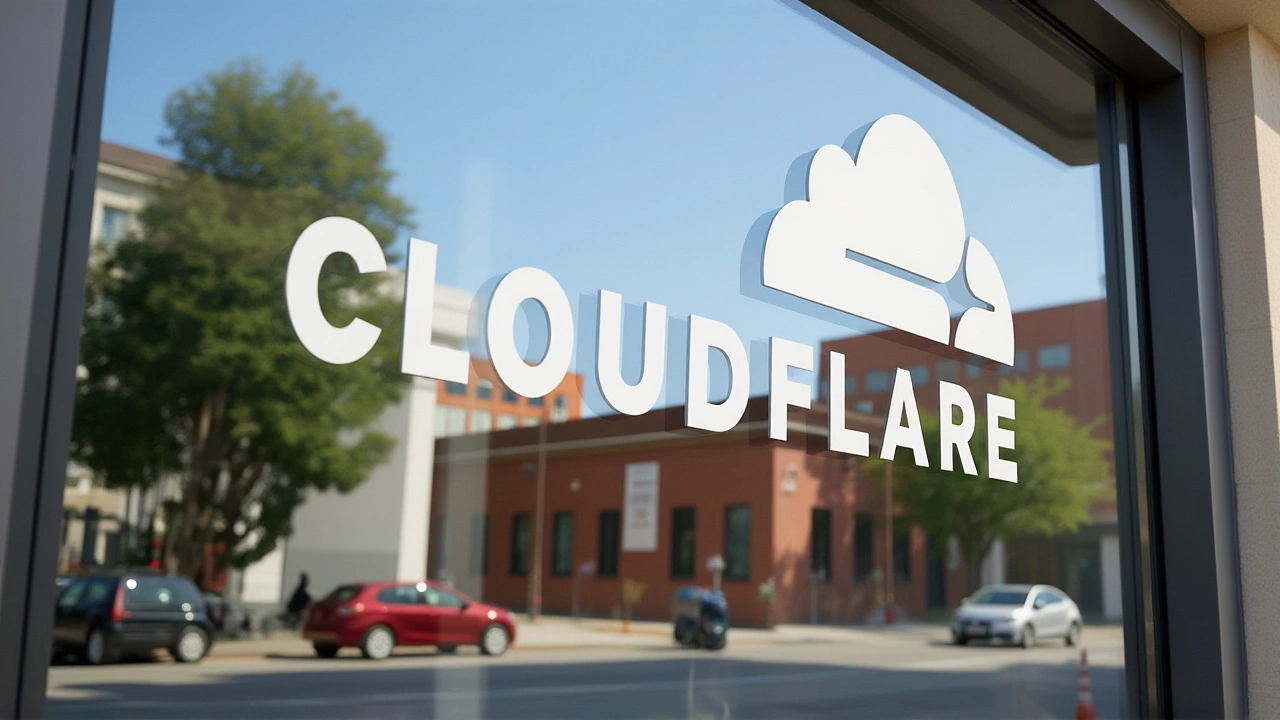At 13:58 UTC on November 21, 2025, the internet blinked—and for 27 minutes, it went dark. A single line of faulty code in Cloudflare Inc.’s routing system triggered a cascading failure that knocked out OpenAI LLC’s ChatGPT, X Corp.’s social platform, and over 712,403 websites across 200+ countries. The outage, which peaked with a 98.7% drop in traffic, left users stranded, businesses bleeding revenue, and regulators scrambling. Even Cloudflare Inc.’s own status page went offline. This wasn’t a hack. It wasn’t a DDoS. It was a mistake in a routine update—and it cost the global digital economy an estimated $158 million in lost productivity.
The Moment the Internet Stopped
The trouble began at 13:00 UTC during a scheduled maintenance window at Cloudflare Inc.’s San Francisco headquarters. Engineers deployed a routine configuration change meant to optimize Border Gateway Protocol (BGP) announcements across its 300+ global data centers. But somewhere in the code, a single unhandled exception slipped through. At 13:58 UTC, routers across the network simultaneously withdrew their route advertisements. The result? Cloudflare Inc. vanished from the global internet backbone.
By 14:02 UTC, Cloudflare Inc.’s status page was unreachable. The company’s only lifeline? Its own Twitter account, @cloudflare_status. At 14:10 UTC, a terse update: “We’re aware of an incident. Working to restore.” Meanwhile, Downdetector recorded over 1.4 million user reports. OpenAI LLC’s ChatGPT was down. X Corp. was silent. The IRS website? Unavailable. Discord? Down. Even the U.S. government’s tax portal went dark.
Who Was Affected—and How Badly?
The scale was staggering. Cloudflare’s netflow telemetry showed a 98.7% traffic collapse during the outage’s peak. That’s not just websites—it’s online banking, telehealth portals, e-commerce checkouts, news sites, and corporate intranets. Cloudflare Inc. serves 20.3% of the global CDN market, meaning nearly one in five websites you visit relies on its infrastructure. The outage hit 89 of the top 100 Alexa-ranked sites. Financial markets reacted instantly: the Nasdaq Composite Index dropped 0.87% (217.34 points) between 14:00 and 14:30 UTC.
For OpenAI LLC, the timing was catastrophic. CEO Sam Altman had spent weeks hyping a live GPT-5 demo scheduled for 18:00 UTC. Hundreds of journalists, including Microsoft’s Scott Guthrie, were waiting. The event was canceled on the spot. For X Corp., owned by Elon Musk, the outage came amid a fragile user trust recovery—another blow to its ad-driven model.
Why Did It Take So Long to Fix?
Cloudflare’s automated rollback kicked in at 14:05 UTC—but it was delayed eight minutes. Why? Safety protocols. To prevent accidental overwrites, the system required manual verification from an engineer on duty. That delay, while prudent, turned a 19-minute outage into a 27-minute crisis. John Graham-Cumming, Cloudflare’s CTO, later admitted the process “wasn’t designed for this scale of emergency.”
By 14:25 UTC, routes were restored. Traffic returned. But the damage was done. Cloudflare’s SLA guarantees 99.995% uptime—roughly 26.3 minutes of allowed downtime per year. This one incident consumed 102.7% of that annual allowance. In other words: they broke their own promise. Twice over.

Who’s Paying the Price?
Cloudflare announced at 16:00 UTC that it would issue 100% service credits for November to all enterprise customers on Business and Enterprise plans—about 12,850 accounts. That’s a financial hit in the tens of millions. But for many businesses, money isn’t the only cost. Lost sales, eroded trust, and operational chaos can’t be refunded.
Customer support tickets flooded in: 14,382 in the first 30 minutes. Over 90% came from North America. Europe and Asia-Pacific were less affected, but still hit. The outage exposed a chilling truth: the internet’s backbone is more fragile than most assume.
What Happens Next?
Within hours, Matthew Prince, Cloudflare’s CEO, pledged change. By December 15, 2025, all network updates will require dual-verification—a human must approve every change, not just one. And starting January 5, 2026, Palo Alto Networks Inc. will audit Cloudflare’s infrastructure.
Regulators are watching. Jessica Rosenworcel, chairwoman of the Federal Communications Commission, said the agency is “in contact” with Cloudflare and will issue findings by January 31, 2026. Analysts predict a seismic shift in enterprise spending. Ed Anderson of Gartner forecasts a 34.7% jump in multi-CDN adoption by Q4 2026, as companies abandon reliance on single providers.

Why This Matters Beyond the Tech World
This wasn’t just a tech glitch. It was a wake-up call. We treat internet infrastructure like air or electricity—something that just works. But Cloudflare’s outage proved how much of our digital lives hangs on a handful of companies. One line of bad code. One human error. One delayed verification. And suddenly, millions can’t pay bills, access medical records, or even check the news.
It’s not just about Cloudflare. It’s about concentration. About risk. About the illusion of redundancy. The internet was built to be decentralized. What we have now is a highly efficient, but dangerously centralized, system. And this outage? It was the first real crack in the dam.
Frequently Asked Questions
How many websites were affected by the Cloudflare outage on November 21, 2025?
Exactly 712,403 distinct domains relying on Cloudflare’s DNS and CDN services went offline during the 27-minute outage. This included 89 of the top 100 websites globally by Alexa ranking, from e-commerce giants to news outlets and financial services. The outage impacted users across 200+ countries, with over 1.2 billion people estimated to have experienced disruption.
Why did Cloudflare’s own status page go down?
Cloudflare’s status page, status.cloudflare.com, was hosted on its own network—meaning it relied on the same BGP routing system that failed. When the erroneous update caused all routes to be withdrawn, even Cloudflare’s internal tools became unreachable. The company had to resort to its Twitter account, @cloudflare_status, to communicate updates, highlighting a critical flaw in its incident response planning.
What was the financial impact of the outage?
Gartner estimated $158 million in lost productivity globally during the 27-minute window, primarily from halted e-commerce, delayed financial transactions, and canceled digital services. Cloudflare also faces a direct financial hit: it will refund 100% of November’s service fees to 12,850 enterprise customers, costing tens of millions. Meanwhile, the Nasdaq dropped 0.87% as investors reacted to the exposed fragility of critical internet infrastructure.
Will this lead to regulatory changes?
Yes. The Federal Communications Commission has opened a formal inquiry and expects to release findings by January 31, 2026. Industry experts believe new standards for critical infrastructure providers may emerge, potentially requiring third-party audits, mandatory redundancy protocols, and public transparency reports—similar to those imposed on power grids and telecom networks.
How does this compare to Cloudflare’s previous outages?
The November 21, 2025 outage was Cloudflare’s most severe since July 17, 2024, when a 47-minute disruption affected 1.8 million websites. But this time, the impact was more concentrated among high-value services like OpenAI and X Corp., and it consumed over 100% of Cloudflare’s annual downtime allowance. The 2024 incident was caused by a misconfigured firewall; this one was a routing bug—a far more fundamental flaw in the network’s core.
Should businesses stop using Cloudflare?
Not necessarily—but they should diversify. Experts now recommend multi-CDN strategies, using providers like Akamai, Fastly, or Amazon CloudFront as backups. Cloudflare remains a powerful tool, but relying on a single provider for critical infrastructure is increasingly seen as risky. The industry is shifting toward resilience through redundancy, not just performance.





